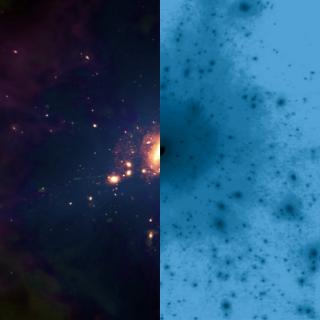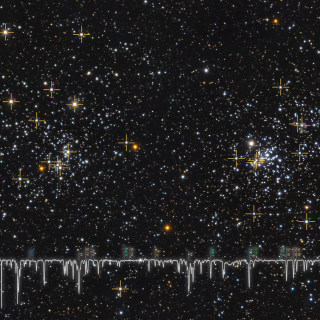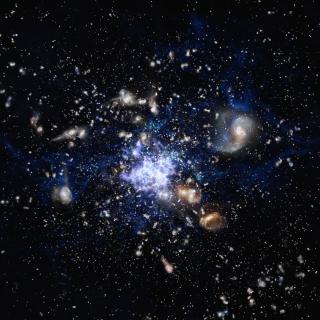We present an analysis of high-resolution Keck/HIRES spectroscopic observations of J0815+4729, an extremely carbon-enhanced, iron-poor dwarf star. These high-quality data allow us to derive a metallicity of [Fe/H] = −5.49 ± 0.14 from the three strongest Fe I lines and to measure a high [Ca/Fe] = 0.75 ± 0.14. The large carbon abundance of A(C) = 7.43 ± 0.17 (or [C/Fe] ∼ 4.49 ± 0.11) places this star in the upper boundary of the low- carbon band in the A(C)–[Fe/H] diagram, suggesting no contamination from a binary AGB companion. We detect the oxygen triplet at 777 nm for the first time in an ultra-metal-poor star, indicating a large oxygen-to-iron abundance ratio of [O/Fe] = 4.03 ± 0.12 (A(O) = 7.23 ± 0.14), significantly higher than the previously most metal-poor dwarf J2209–0028 with an oxygen triplet detection with [O/Fe] ∼ 2.2 dex at [Fe/H] ∼ −3.9. Nitrogen is also dramatically enhanced with (A(N) = 6.75 ± 0.08) and an abundance ratio [N/Fe] ~ 4.41 ± 0.08. We also detect Ca, Na, and Mg, while providing upper limits for eight other elements. The abundance pattern of J0815+4729 resembles that of HE 1327–2326, indicating that both are second-generation stars contaminated by a ~21–27 MSUN single, zero-metallicity, low-energy supernova with very little mixing and substantial fallback. The absence of lithium implies an upper limit abundance A(Li) < 1.3 dex, about 0.7 dex below the detected Li abundance in J0023+0307, which has a similar metallicity, exacerbating the cosmological lithium problem.
Oxygen-to-iron abundance ratios [O/Fe] vs. metallicity [Fe/H] of the iron-poor star J0815+4729 (large star symbol) compared with literature measurements. The two triangles at [Fe/H] ∼ −3.6 correspond to the metal-poor binary stars CS 22876–032 AB.
Advertised on
Authors
Jonay Isai
González Hernández
D. S. Aguado
Carlos
Allende Prieto
A. J. Burgasser
Prof.
Rafael
Rebolo López
References
![Oxygen-to-iron abundance ratios [O/Fe] vs. metallicity [Fe/H] of the iron-poor star J0815+4729 (large star symbol) compared with literature measurements. 1D-LTE oxygen-to-iron abundance ratios [O/Fe] vs. metallicity [Fe/H] of the iron-poor star J0815+4729 (large star symbol) compared with literature measurements from the [O I] forbidden line (diamonds), the near-IR O I triplet (circles), and the near-UV OH lines (squares). The two triangles at [Fe/H] ∼ −3.6 correspond to the oxygen measurement from OH lines in the metal-poor binary stars CS 22876–032 AB (González Hernández et al. 2008).](/sites/default/files/styles/crop_rectangle_21x9_to_1280/public/images/news/figuraoxygenJ0815_f.png?h=89157d8d&itok=xdjM0UJc)



